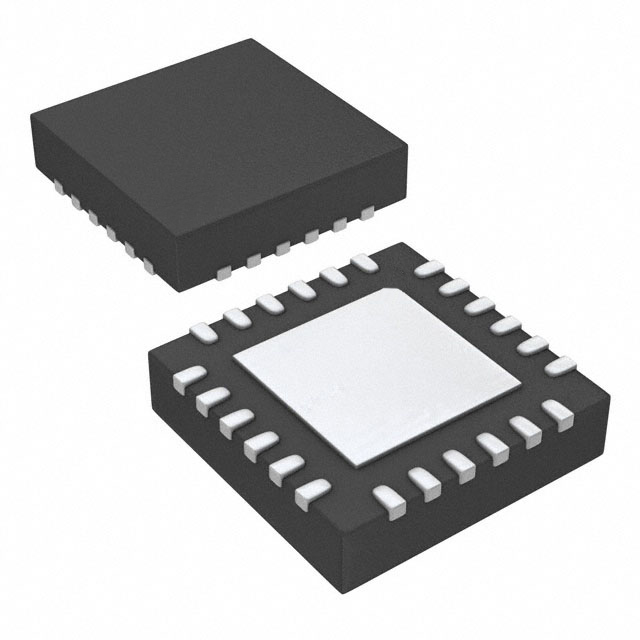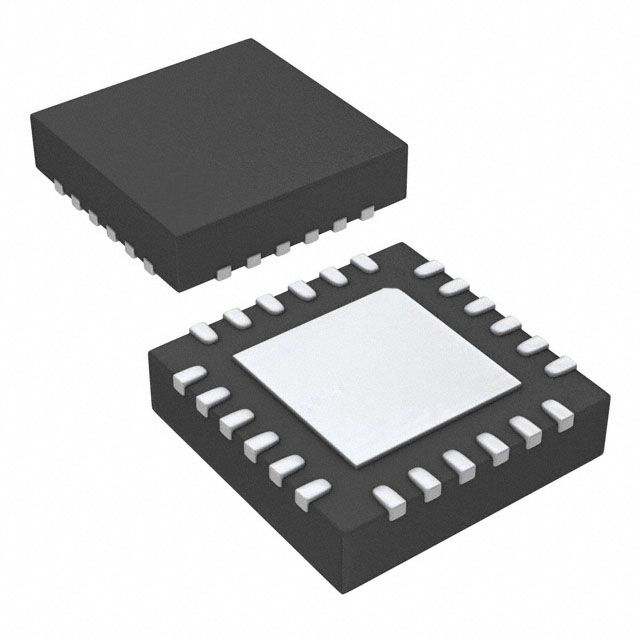MPU-6050: High-Performance 6-Axis Motion Sensor with I2C Bus Interface
The MPU-6050 is a widely used Inertial Measurement Unit (IMU) that combines a 3-axis accelerometer and a 3-axis gyroscope. It provides accurate motion sensing for robotics, drones, and wearable devices. Its built-in Digital Motion Processor (DMP) enables efficient sensor fusion by processing complex calculations internally, reducing the workload on microcontrollers like Raspberry Pi or other embedded platforms.
Key Features
1. 3-Axis Accelerometer & 3-Axis Gyroscope
Measures acceleration and angular velocity along the X, Y, and Z axes.
Full-scale range options for accelerometer: ±2g, ±4g, ±8g, ±16g.
Full-scale range options for gyroscope: ±250°/s, ±500°/s, ±1000°/s, ±2000°/s.
2. I2C Bus & SPI
InterfaceSupports I2C bus for communication, operating at standard speeds up to 400 kHz.
SDA pin (Data Line) and SCL pin (Clock Line) ensure smooth data transfer.
Alternatively, it supports SPI at speeds up to 10 MHz for faster communication.
3. Digitized Output with Built-in Support Circuitry
Provides a digitized output for both acceleration and angular velocity.
Internal low-pass filter reduces noise for improved accuracy.
4. Clock Pin and Configurable Data Rat
Clock pin provides precise timing for data output.
Configurable output data rate from 1 Hz to 1 kHz to suit various applications.
5. High Performance and Low Power
Active mode current consumption of just 3.9 mA.
Sleep mode available for power-efficient designs, ideal for battery-powered devices.
Technical Specifications:
Operating voltage: 2.3V to 3.4V (typical 3.3V).
Interface: I2C (standard 400 kHz) or SPI (max 10 MHz).
Built-in filter: Integrated digital low-pass filter to reduce noise and improve data quality.
Temperature sensor: Temperature measurement in the range of -40°C to 85°C.
MPU-6050 Parameters
MPU-6050 similar comparison
MPU-6050 vs MPU-9250 vs MPU-6500 vs ICM-20648 vs MPU-6000 comparison
| Feature | MPU-6050 | MPU-9250 | MPU-6500 | ICM-20648 | MPU-6000 |
|---|---|---|---|---|---|
| Image |  |  |  |  |  |
| Manufacturer | TDK InvenSense | TDK InvenSense | TDK InvenSense | TDK InvenSense | TDK InvenSense |
| Sensor Type | 3-Axis Accelerometer + 3-Axis Gyroscope | 3-Axis Accelerometer + 3-Axis Gyroscope + 3-Axis Magnetometer | 3-Axis Accelerometer + 3-Axis Gyroscope | 3-Axis Accelerometer + 3-Axis Gyroscope | 3-Axis Accelerometer + 3-Axis Gyroscope |
| Magnetometer | No | Yes (3-Axis Magnetometer) | No | No | No |
| DMP (Digital Motion Processor) | Yes | Yes | Yes | Yes | Yes |
| Data Output Interface | I2C, SPI | I2C, SPI | I2C, SPI | I2C, SPI | I2C, SPI |
| Accelerometer Range | ±2g, ±4g, ±8g, ±16g | ±2g, ±4g, ±8g, ±16g | ±2g, ±4g, ±8g, ±16g | ±2g, ±4g, ±8g, ±16g | ±2g, ±4g, ±8g, ±16g |
| Gyroscope Range | ±250°/s, ±500°/s, ±1000°/s, ±2000°/s | ±250°/s, ±500°/s, ±1000°/s, ±2000°/s | ±250°/s, ±500°/s, ±1000°/s, ±2000°/s | ±250°/s, ±500°/s, ±1000°/s, ±2000°/s | ±250°/s, ±500°/s, ±1000°/s, ±2000°/s |
| Temperature Sensor | Yes | Yes | Yes | Yes | Yes |
| Power Supply (V) | 3.3V (2.3V - 3.4V) | 3.3V (2.3V - 3.4V) | 3.3V (2.3V - 3.4V) | 3.3V (2.3V - 3.4V) | 3.3V (2.3V - 3.4V) |
| Power Consumption | 3.9 mA (active mode) | 3.8 mA (active mode) | 3.9 mA (active mode) | 3.7 mA (active mode) | 3.9 mA (active mode) |
| Size (mm) | 3.98 x 4.00 x 1.03 | 5.00 x 3.80 x 1.06 | 4.90 x 3.80 x 1.00 | 4.90 x 3.80 x 1.00 | 4.90 x 3.80 x 1.00 |
| Output Data Rate | 1 kHz to 1 kHz (configurable) | 1 kHz to 1 kHz (configurable) | 1 kHz to 1 kHz (configurable) | 1 kHz to 1 kHz (configurable) | 1 kHz to 1 kHz (configurable) |
| Cost (Approx.) | Low | Medium to High | Medium | Medium | Low |
| Typical Applications | Robotics, drones, motion tracking | Robotics, drones, VR/AR, navigation, gesture recognition | Robotics, drones, motion tracking | Robotics, drones, gaming, gesture tracking | Robotics, drones, motion tracking |
Key Differences:
Magnetometer:
The MPU-6050, MPU-6500, ICM-20648, and MPU-6000 do not have an integrated magnetometer.
The MPU-9250 has a built-in 3-axis magnetometer, which allows it to detect magnetic fields, enabling full 9-axis motion tracking. This makes the MPU-9250 more suitable for applications requiring full orientation and heading information (e.g., navigation systems).
Sensor Range:
All sensors offer similar accelerometer and gyroscope range options: ±2g, ±4g, ±8g, ±16g for accelerometer and ±250°/s, ±500°/s, ±1000°/s, ±2000°/s for gyroscope. The ability to select different ranges allows these sensors to be adaptable for various applications.
DMP (Digital Motion Processor):
All these IMUs come with an integrated DMP, which offloads the computational work from the main processor, allowing for more efficient sensor data fusion and easier real-time motion tracking. The DMP enables features like sensor fusion algorithms to combine accelerometer and gyroscope data to calculate orientation or motion.
Power Consumption:
Power consumption is very similar across all models, typically around 3.7 mA to 3.9 mA in active mode, which is typical for these types of motion sensors.
Size:
The MPU-6050 is the smallest of the group at 3.98 x 4.00 x 1.03 mm. The MPU-9250 and MPU-6000 are slightly larger, but still compact for embedded systems.
Temperature Sensor:
All of the sensors include a temperature sensor, which is important for compensating for temperature-related variations in sensor readings (especially gyroscope drift).
Applications:
The MPU-6050, MPU-6500, and MPU-6000 are more commonly used in applications that only require accelerometer and gyroscope data, such as motion tracking, robotics, and drones.
The MPU-9250, with its built-in magnetometer, is more suitable for applications that require full 9-axis motion sensing, such as navigation systems, VR/AR, and gesture recognition.
Summary
MPU-6050: A good choice for basic 6-axis motion sensing with low cost and simple applications.
MPU-9250: Ideal for applications needing 9-axis motion tracking, such as robotics, drones, and navigation.
MPU-6500: Similar to the MPU-6050, with improved performance and better power efficiency, often used in more advanced applications where high precision is required.
ICM-20648: Similar to MPU-6500, but offers additional benefits in terms of newer technology and improved power efficiency.
MPU-6000: One of the earlier models, similar to MPU-6050 but without some of the newer features in later models.
Each sensor has its strengths depending on the complexity and requirements of the application.
MPU-6050 Pin configuration (I2C interface):
The MPU-6050 is compatible with the SparkFun Qwiic and STEMMA QT ecosystems, making it easy to interface using pre-built connectors and libraries. It connects seamlessly with Raspberry Pi through the I2C bus via the SDA and SCL pins. Example connection:
| Pin Name | Description |
|---|---|
| VCC | Power input (usually 3.3V or 5V) |
| GND | Ground |
| SDA pin | Data line for I2C communication (connect to Raspberry Pi GPIO pin 2). |
| SCL pin | Clock line for I2C communication (connect to Raspberry Pi GPIO pin 3). |
| INT | Interrupt output, usually used to detect data updates or events |
| AD0 pin | I2C address selection (0x68 if connected to GND, 0x69 if connected to VCC). |
TPS51200DRCR PDF Datasheet
Applications
Robotics and Drones: Real-time motion tracking for precise navigation and control.
Wearable Devices: Motion sensing for fitness tracking, health monitoring, and gesture detection.
Gaming and VR Systems: Enhanced immersion with accurate head-tracking capabilities.
Raspberry Pi Projects: Easy integration with Python libraries for motion sensing projects.
MPU-6050 FAQs
1. What data can MPU-6050 measure?
A: MPU-6050 is a six-axis sensor that can measure acceleration and angular velocity. It includes:
Three-axis accelerometer: measures acceleration of the three axes X, Y, and Z.
Three-axis gyroscope: measures angular velocity of the three axes X, Y, and Z.
2. What is the operating voltage of MPU-6050?
A: The operating voltage range of MPU-6050 is 2.3V to 3.4V. It is generally recommended to use a 3.3V power supply.
3. How to connect to MPU-6050 via I2C communication?
Answer: MPU-6050 supports I2C interface communication. When using I2C communication, the connection is as follows:
SDA: data line
SCL: clock line
VCC: power supply (usually 3.3V)
GND: ground (ground)
AD0: I2C address selection, the address is 0x68 when connected to GND, and the address is 0x69 when connected to VCC.
After configuring the I2C connection, the data of the accelerometer, gyroscope, and temperature sensor can be read through the I2C protocol.
4. How to set the range of the accelerometer and gyroscope of MPU-6050?
A: The MPU-6050 provides four accelerometer ranges and four gyroscope ranges, which users can set according to their needs:
Accelerometer range: ±2g, ±4g, ±8g, ±16g
Gyroscope range: ±250°/s, ±500°/s, ±1000°/s, ±2000°/s
Set by configuring the sensing range registers (such as ACCEL_CONFIG and GYRO_CONFIG).
5. What is the data output rate of the MPU-6050?
A: The data output rate of the MPU-6050 is usually 1 kHz, but a lower output rate can be configured by modifying the output rate registers of the gyroscope and accelerometer (such as SMPLRT_DIV), such as 500Hz, 200Hz, etc.
6. Does the MPU-6050 have a digital motion processor (DMP)?
A: Yes, the MPU-6050 has an internal Digital Motion Processor (DMP) that can perform complex sensor data fusion tasks, such as fusion calculations of accelerometer and gyroscope data, providing information such as the angle and attitude of the device. The DMP allows the main microcontroller to reduce the computational burden and focus on other tasks.
7. How to calibrate the MPU-6050?
A: The accelerometer and gyroscope of the MPU-6050 usually need to be calibrated to improve data accuracy. The calibration steps usually include:
Accelerometer calibration: Measure and adjust the zero bias by placing the device in different known directions (such as horizontal, vertical).
Gyroscope calibration: Keep the device still, measure the zero bias error of the gyroscope, and adjust it.
Calibration is usually done in the program by reading multiple samples and calculating the correction value.
8. What applications are MPU-6050 suitable for?
A: The MPU-6050 is mainly used in applications that require accelerometer and gyroscope data. Common applications include:
UAV: attitude control and flight stabilization.
Robotics: motion tracking and posture control.
Wearables: motion tracking, health monitoring.
Virtual reality (VR): head motion tracking.
Motion tracking: in fitness equipment, smart watches, etc.
9. How does the MPU-6050 process temperature data?
Answer: The MPU-6050 has an integrated temperature sensor that measures the temperature of the chip. The temperature sensor outputs a raw digital value proportional to the temperature, which is usually used to compensate for the temperature drift of other sensors (such as gyroscopes). The temperature value can be read through I2C and converted to obtain the actual temperature data.
10. What communication interfaces does the MPU-6050 support?
Answer: The MPU-6050 supports two communication interfaces, I2C and SPI. I2C is the most commonly used interface and is usually used in embedded systems. The SPI interface provides higher transmission speeds but requires more pins.
11. Can the MPU-6050 work in low power mode?
A: Yes, the MPU-6050 supports low power mode. You can set the sleep mode (controlled by I2C) to reduce power consumption, which is very important for battery-powered applications (such as wearable devices). By controlling the PWR_MGMT_1 register, you can enable the sleep mode and reduce power consumption.
12. How to read the accelerometer and gyroscope data of the MPU-6050?
A: You can read the accelerometer and gyroscope data through the I2C or SPI interface. When reading the accelerometer and gyroscope data, you first need to access the corresponding registers, read six bytes (two bytes for each axis), and then merge the data and perform appropriate conversion to obtain the acceleration value and angular velocity value.
13.Why Choose the MPU-6050?
The MPU-6050 offers an excellent balance of performance, flexibility, and cost. Its DMP, triple-axis sensing, and digitized output make it a preferred choice for both hobbyists and professionals alike. Whether for advanced robotics or simple motion-sensing applications, this sensor delivers reliable results with minimal power consumption.
For example, the process of reading accelerometer data is as follows:
Send a read command to the accelerometer register (such as ACCEL_XOUT_H).
Read six bytes of data and convert them into acceleration values (unit: g).
TDK InvenSense
En stock : 30000






